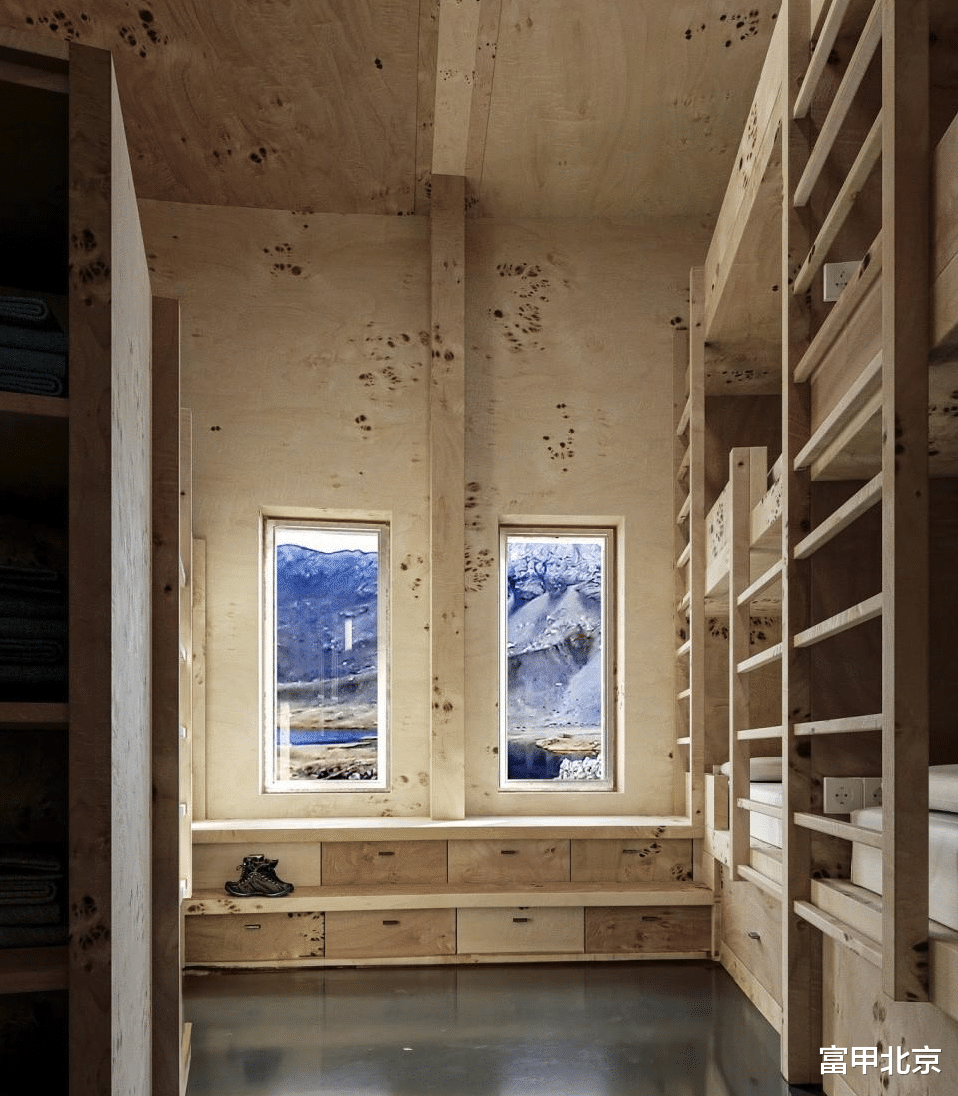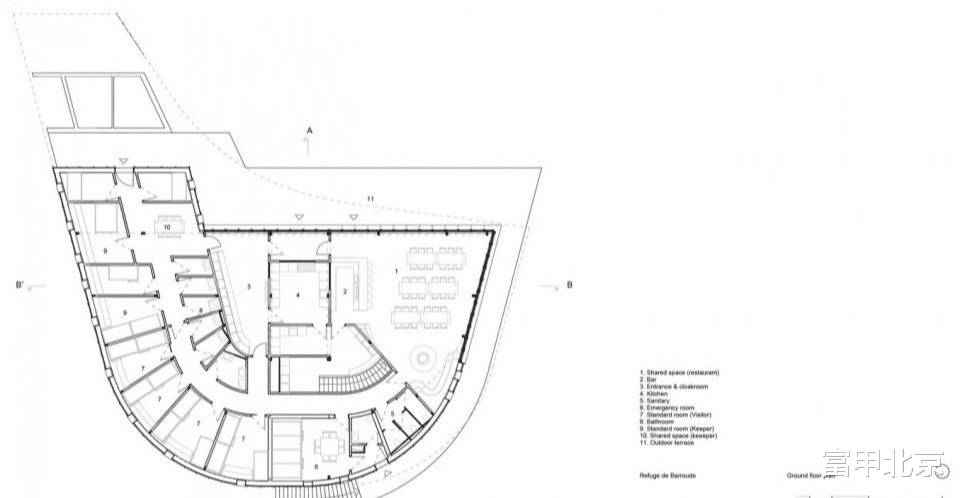Nestling in a UNESCO World Heritage site in the heart of the Pyrenees National Park. The building will provide a new stop-off point for hikers on the Haute Route des Pyrénées, as well as a new reception and support centre for National Park staff. The general layout is based around two main functional areas. On the one hand, a set of areas open to the public, including the reception areas, dining room, toilets and dormitories, and on the other, a set of private areas reserved for the refuge warden and the staff of the Pyrenees national Park.
▼建筑与周边壮美的自然环境,the refuge and the surrounding beautiful natural environment© Snøhetta

自然性与可见性的平衡A balance between integration and visibility
全新的Barroude山中庇护所的概念基于为徒步旅行者提供安全避风港的愿望,同时也致力于保持周边自然环境的完整性和威严。在这个宏伟的环境中,人类必须保持谦逊,项目的概念在自然性和可见性之间取得了微妙的平衡。
The concept for the new Barroude refuge is based on the desire to provide a safe haven for hikers while preserving the integrity and majesty of its natural surroundings. In this grandiose setting, where the human presence must remain humble, the project’s concept strikes a delicate balance between integration and visibility.
▼项目远观,viewing the project at distance© Snøhetta

适应周围环境Adapted to its surrounding
建筑重建于前避难所的遗址上,位于当地动植物保护区之外。该位置经过精心选择,充分利用了现有的地形,在不需要过多的土方工程的情况下,建造出两层的庇护所。秉承着生物气候设计的原则,最终的建筑方案呈现出紧凑的结构形式,最大限度地减少了暴露于外部环境中的外立面面积,并使其完美地融入了Barroude cirque的景观中,同时,建筑的双重朝向也促进了自然通风。
Situated on the site of the former refuge, the building is located outside the zones where the endemic flora and fauna are protected. The position was carefully chosen to take advantage of the existing topography, enabling two levels of refuge to be created without the need for excessive earthworks. With its bioclimatic architectural design, the refuge is a compact structure that minimizes the amount of facade exposed to the elements and blends perfectly into the landscape of the Barroude cirque. The building’s dual orientation also encourages natural ventilation.
▼鸟瞰,aerial view© Snøhetta

巨大的植物屋顶堪称建筑最鲜明的特征,屋顶的设计遵循了景观的自然线条,由回收铝板制成,保护了建筑的半户外空间免受盛行风的影响。
The refuge is characterized by its large planted roof, which follows the lines of the landscape, and its protective envelope made of recycled aluminium, which shelters the outside spaces from the prevailing winds.
▼模型,model© Snøhetta

共享空间Shared spaces
庇护所内部由两个主要区域组成,包括面向Barroude cirque景观与Barroude湖的生活空间,以及位于北侧、面向山脊的卧室空间。
The layout of the refuge is organised into two main areas: the living spaces, open onto the cirque surroundings and Lake Barroude, and the bedrooms, positioned to the north, facing the ridge.
▼公共餐厅,living and dining area© Snøhetta


▼由室内看周围自然黄精,viewing the landscape from interior© Snøhetta

Barroude山中庇护所为人们提供了多种类型的住宿。冬季宿舍位于地下一层,可以直接从外部进入,专门供徒步旅行者和公园工作人员在保护区过夜。徒步旅行者宿舍,有8人间与6人间,以及适合冬季使用的8人间,宿舍虽然布局紧凑但舒适温暖。除了徒步旅行者的宿舍外,项目内还包括了管理员、助手以及公园维护人员的房间。
The dormitories at the Barroude refuge offer several types of accommodation. The winter dormitory, on the lower ground floor with direct access from outside, is exclusively for hikers and Park staff spending the night at the refuge. For hikers, there are 8- and 6-person dormitories, as well as 8-person dormitories adapted for winter use, each offering compact but cosy accommodation. In addition to the hikers’ dormitories, the refuge has rooms for the warden, his assistants and Park maintenance staff.
▼宿舍内部,interior of the dormitory© Snøhetta

室内空间的设计鼓励了“共同生活”,为使用者提供了一个友好的、充满光线的环境,在室内也可以看到更广阔的景观。
The design of the interior spaces encourages ‘living together’ by offering a friendly, light-filled environment with views of the wider landscape.
▼场地平面图,site plan© Snøhetta

▼平面图,plan© Snøhetta

▼剖面图,section© Snøhetta

